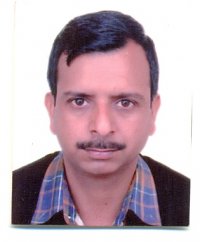Toll goes, but will your traffic nightmare end?
Written by Admin Friday, 31 January 2014
( 0 Votes )
GURGAON: For years, you would have cursed the long wait at the toll booth, morning and evening. You zipped down the expressway, and then got stuck. A daily pain. This will finally go, maybe in a month or two. But will that be the end of your troubles?
The answer frankly is no. It might ease the burden a bit, but there’s something fundamentally wrong with the expressway. The NH-8 seems to have been designed to fly over Gurgaon, rather than service the Millennium City. And therein lies the problem. There are far too many choke points along the way, and this will probably get worse when the toll booth goes, as vehicles all land up at a choked entry point much faster and get stuck there.
The expressway needs to work for Gurgaon, and work a lot better. Gurgaon residents should be able to enter and exit the expressway far more easily. And for this to happen, the choke points need to be decongested.
TOI spoke to experts and officials and has identified the main bottlenecks, and over the next few weeks, we shall look into the problem areas and what needs to be done to declog the city’s main entry points.
“The removal of the toll would only help solve about 20% of Gurgaon’s traffic problems and would help speed up the exit and entry in that localized space. It was bound to have been a problem because transit to such a mega city can’t be manually operated. But Gurgaon’s real challenge would be to deal with its local transport and its numerous choke points,” says Raj Vir Singh, the former chief town planner of Haryana.
Among the various choke points that have been identified by transport and planning experts are IFFCO Chowk, Udyog Vihar, Sikanderpur, Sohna Road, Cyber City, Sushant Lok, Ambience Mall, Kapashera, Signature Towers and Hero Honda Chowk. We will look in detail at what’s wrong with each of these entry points over the next few weeks and suggest ways to solve them.
Gurgaon is perhaps the only city in India which offers more employment than its population. The employees largely come from Delhi and other parts of NCR. “When Gurgaon was planned, no one had imagined that such volumes of people would come to the city every day for work,” says Raj Vir Singh.
“There needs to be adequate means of transporting this workforce in the city at the major employment hubs,” says Sewa Ram, head of the department of transport planning, School of Planning And Architecture. He says that in order to beat the peak-hour rush, Gurgaon’s mass transit system has to reach the work force to their actual destination. “The Metro needs to be stretched from West Delhi to Cyber City and the Hero Honda Chowk flyover needs to be activated,” he says.
“Gurgaon’s main problem is that its transport system depends on its two main spines: the NH-8 and MG Road. The expressway, which should be a high-speed road, has now ended up being a city road with multiple exits. There’s a clash of speeds between local and regional transport. Local vehicles slow down to approach exits into the city while regional traffic breezes through, causing major accidents on the road,” says Sewa Ram. “There is a need for alternative approaches to Gurgaon. One can think of developing the Gurgaon-Faridabad road as an alternative to the existing roads,” says Raj Vir Singh.
The best way to decongest the choke points, however, is to work on public transport. “The key reason why Gurgaon’s transport and mobility is in a state of chaos is its ad hoc and leapfrog development over its 350 square km. Sectors are spread out, schools, colleges, hospitals have all come up in an unplanned manner. Certain outer sectors beyond 56 are completely cut off from the main city. It is for this reason that the transport department has failed to operate a viable public bus system within the city, leading to so many cars being used here,” says Raj Vir Singh. “Gurgaon needs comfortable and small capacity public buses since the city cannot have systematic, broad bus routes. The small bus routes can connect the places in specific routes at a higher speed than big buses. If they are efficient, everyone would like to use such a system which would prevent vehicular density on the road,” says Sewa Ram.
So, while the toll may go, there remain several key problem areas that need to be addressed. At the micro level there are the individual choke points, and at the macro level, the bigger issue of encouraging more and more people to use the public transport system by making it a viable option. TOI will look at the issues threadbare and lay out a roadmap for a better Gurgaon.
http://timesofindia.indiatimes.com/city/gurgaon/Toll-goes-but-will-your-traffic-nightmare-end/articleshow/29575796.cms
| < Department of town and country planning’s new guideline to allow extra gates in plotted colonies | Bandhwari plant to start by March-end > |
|---|



